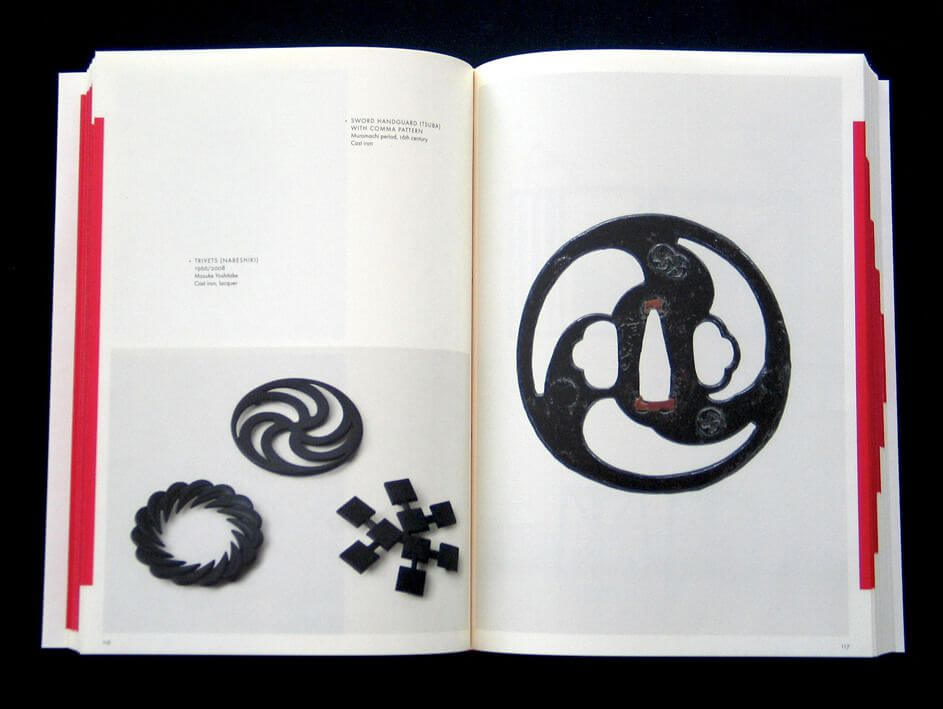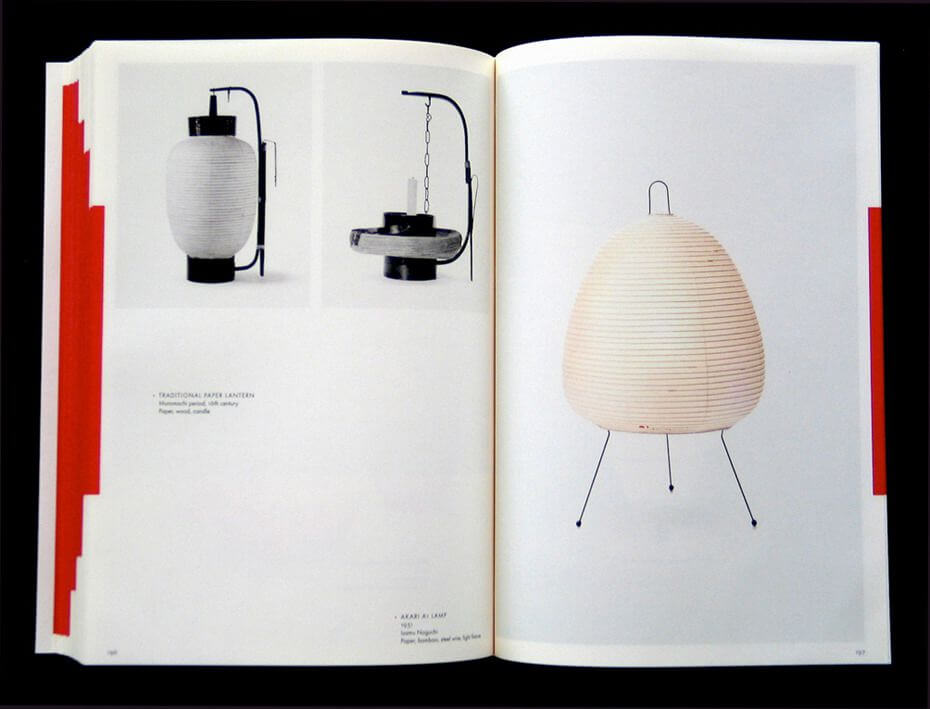Art historian Rossella Menegazzo, Professor of East Asian Art History and the co-author of WA: The Essence of Japanese Design joins us on Luxeat to talk about the reason we’re so drawn to the simple, clean and minimalist designs we associate with Japan.
Rossella Menegazzo: The enduring beauty of Japanese design
Art historian Rossella Menegazzo has always specialised in Japan: she completed her PhD in Oriental Studies with a dissertation on Japanese art history and photography in 2009, and went on to become Professor of East Asian Art History at the University of Milan. Menegazzo is the author of numerous texts on Japanese photography, graphic design, and the traditional ukiyo-e art, and the co-author of WA: The Essence of Japanese Design. Her book explores the timeless beauty of Japanese design through 250 objects, ranging from bento boxes, calligraphy brushes, and Shoji sliding doors to Noguchi’s Akari lamp, the iconic Kikkoman soy sauce bottle, and a modern‐day kimono. Menegazzo joins us on Luxeat to talk about the reason we’re so drawn to the simple, clean and minimalist designs we associate with Japan.

What is the secret to Japanese soft power? There are so many people around the world who are obsessed with Japan, even if they’ve never been there.
You are right. People are not aware of this word soft power and how important it is. The Japanese government has “cool Japan” initiatives which try to push their famous cultural exports on foreigners. But I don’t think it’s “cool Japan” which has an effect on western people, it’s real Japanese style, real Japanese taste, atmosphere and the way of doing things.
These questions were a starting point in my book WA: Why is Japanese art so beautiful? Why do we love it? Why when we see Japanese design do we immediately recognise its Japanese-ness? For example, when we walk around the wonderful Salone del Mobile design week in Milano every year, we immediately understand which pieces are Japanese. Maybe it’s the simplicity of the forms, the way they use natural materials, how they portray nature and the ecosystem. I speak about design, but the same can also be said for fashion, and crafts such as ceramics, lacquer, bamboo and also other materials. A lot of time is given to every stage of making. So when you touch or see a perfect form, which is a must in Japanese culture, you sense the human action that has gone into that perfection. There is a subtle way of working out a form in these natural materials, without destroying them. Japan continues to have a strong impact in western everyday life, giving us new objects and new ways of seeing reality. It’s a soft power, but it’s long term.
Japan continues to have a strong impact in western everyday life, giving us new objects and new ways of seeing reality.
How does Japanese simplicity and minimalism differ from simplicity in the West?
If you look at a Zen painting, you will feel the void space and the simplicity of forms as a natural construction rather than as a scientific based, rational thought. It doesn’t mean ‘emptiness’ in the sense that something is missing, though, it’s a void which is full of material parts. We can feel that the ink strokes or brushes and the void parts have the same importance to each other. But if we look at contemporary design, you’ll see in the same way that designers are using voids to construct objects. They are using paper, plastic and polyurethane materials, but by using these materials they are avoiding and eliminating most parts of the material to leave the void as a construction of space. In the West we have an idea first, then we go down to delineate details of the project. In contrast, in Japan we have a ‘thinking of making’ which springs from the bottom like a mushroom, adding little by little parts to form the whole. I think that’s the difference, and this is connected to Japan’s pantheistic thinking of nature. They view human beings as a part of the whole, a completely different view from a monotheistic thinking where the human being is at the centre.

It’s interesting that the Japanese acquired a taste for quiet and simplicity before westerners did. Why do you think that is? What influenced that change in the culture and way of life?
Yes, you are right. I think that Japan has always been a master at absorbing everything from outside, and transforming different approaches that they received from other cultures. As you mentioned, they previously borrowed a lot of influences from Chinese culture, which was very elaborate and luxurious. They then went full circle and created a new, very simple and minimal ascetic. I think that their pantheistic approach to nature and to the universe conveyed by shintoist thinking is a starting point, as well as zen thinking, which had a great influence from the Medieval period. Objects of everyday life design made with straws of rice show the strong relation of design to nature, harvest and everyday eating. For example, the shimenawa rope we see in shinto shrines such as Izumo Taisha is one of the most minimal and primitive designs possible, but also immediately felt in its meaning.
I think that Japan has always been a master at absorbing everything from outside, and transforming different approaches that they received from other cultures.
We also have to think about the very hard conditions of living in Japan: the sea around Japan, which can be both good and bad, and the continuously active volcanoes, which have a strong impact on the perception of things and on design and architecture. Then we have Zen philosophy, which had a big impact on modern aesthetics. Most of the beautiful design and applied arts we think about with Japan today comes from the aesthetic linked to Zen thinking: raku ware, Noh theatre, calligraphy, ikebana… everything we appreciate about Japanese simplicity as a product comes from Zen aesthetics. They’re all there to help meditation.
And you mentioned that the tea ceremony was essential, and this philosophy achieved the ultimate emptiness?
Yes. I think the tea ceremony is performed too much nowadays. It’s too often done like a performance, but the tea ceremony means above all to give an aesthetic approach to things, materials and acts. The objects, the cups, the tea boiler, the tea powder, the spoon, the bamboo whisk, calligraphy, flower arrangement, the way the master interacts with these artifacts, and the space of the tea room – all these are part of the ceremony.
It’s not only drinking tea together, it’s a gathering that means welcoming the other people to your place through artworks and aesthetic appeal, in a way. I think this is the most beautiful message we can send when we welcome somebody into our home, is to try to create the most beautiful space for them. So the tea ceremony in a sense is a full immersive art.

In your book WA, you have mentioned that Japan is a unique country in the world, one which found beauty in the ordinary. Can you explain that?
That’s an interesting point. I’m thinking a lot about this, and sometimes in a negative way. We often speak about’ super flat’ and ‘super ordinary’ when we speak about design. For example, when we think about Muji products, it was originally supposed to be no branding product, and instead it has become the most famous brand outside of Japan. It’s incredible. To try to explain the Muji concept, I’d say that each Muji item has no particularity, no characteristics. So it’s super flat and ordinary, you have a production and a concept of one object, which eliminates the peculiarity of that object. So put it everywhere for everyone, it’s a prepared product and it has no male and no female. It’s difficult to explain, but it’s a kind of aseptic approach, eliminating personality to adapt to everyone. It’s evident that we as humans find something beautiful in this, otherwise Muji would not be so successful outside of Japan.
If I were to compare Italian and Japanese design, I would say passion versus no passion. There is no passion in this design, it’s perfect in form and color, in proportion, I can use it easily, everywhere, in an elegant space and in a poor space, but you can’t feel passion or desire, but calm and quiet. This point is part of all Japanese culture. You have a standard of beauty which is decided from the beginning, and you feel comfortable because you can use it freely, because there is no passion or individuality. It’s the opposite of love, something which completely brings you to another world.
And there is another concept in your book – the knife. I think it’s a brilliant comparison between a German and a Japanese knife.
Essentially – as Hara Kenya says – if you look at a Japanese knife for sushi and sashimi, you have a handle, which is a very simple wood block, so you can use it freely as you prefer, and you can handle it freely. But if you look at a European knife, you have a very individual and thought form, and you are invited to use that knife in that way, ergonomically. Both these knives are beautiful in design, but in one you have personality, in the other you do not, because it’s adaptable, so you construct the personality of the object through the relation to the person who is using it.
Tea ceremony is performed too much nowadays. It’s too often done like a performance, but the tea ceremony means above all to give an aesthetic approach to things, materials and acts.
In your book WA, you have covered almost all Japanese arts. What are your favourites? And which ones are the most important and the most influential in design?
What I wanted to show through the book is how Japanese contemporary design links with the past art and craft objects. If you consider lacquer bowls, lacquer trays and screens shown in museums as implied art objects, you’ll see they also correspond to functional use products in Japanese culture. The difference between arts and crafts came to Japan from the West in the 19 century. And if we look at painted screens and ceramics, we can’t see any division between art and design. All the artwork in old Japan were also products of design and interior design. And so the book WA wants to show this particularity. That’s why you don’t see any division between old and young craft masters and designers, or between museum exhibits and industrial, marketed products. There’s a continued exchange between arts and technical aspects. For example, in a contemporary design there might be an old technique applied to new materials, to adapt to a new style of life. I can’t say that I prefer these, but what I like is this capacity of changing and adapting to our life.
Can we talk a bit about the shokunin concept, especially in Japan. Do you think we have European equivalents, someone who is really dedicated to his craft?
The idea of shokunin is dedicated to manual work. They produce the same things, the same objects everyday, passing on their techniques for a hundred years. They are people who can teach the new generations technical aspects of very detailed work. But what is missing in the shokunin, especially in the past, was a concept of new forms. This is what I wanted to show in some contemporary design production, linked to the shokunin’s capacity for working out perfect forms with new materials. But the new aspect of shokunin today is their awareness of their role and the idea of producing new things, new objects related to the past. I think this is necessary in order to survive. I hope shokunins will continue to produce traditional works in the future, but it’s clear that some objects will not be used at all, in which case they should reuse their techniques to produce some similar objects for everyday use today. Young shokunin may have this awareness already, and they are working with designers, which is already different from the past.

How is it changing? And what’s the future of Japanese design? What are the trends of design you see in Japan?
There are many small laboratories run by young Japanese makers, working with antique techniques with ceramics or lacquer. Many young people are trying to continue their tradition while creating new traditions, and they are very good. I saw some people working with recycled materials and making beautiful products, working with new techniques to dye textiles, and with products that can be adapted to our everyday life. The creation of these new traditions before our eyes is wonderful.
But also I worry about very superficial production, which is not connected to the world. The superficial attitude can be very “wagamama” (self-indulgent), with the view that what happens outside of Japan doesn’t matter. It’s a natural part of the Japanese attitude, because it’s far away from the rest of the world, an archipelago closed and protected by the sea. Japan has a comfortable life, everything is easy to use, there is no country where you can live as comfortably as in Japan. But I hope that young Japanese people and artisans can be aware of what is happening outside, to give a more deep contribution to international production. Sometimes I see very naive products, which show a disconnection, and it’s sad in a certain sense.
Speaking about art all over the world, don’t you think that there is a lot of “wagamama” ?
Oh yes, if I go to art fairs around the world, I think 80% of the products are intended to be hung in a fancy bedroom, sold to a rich buyer, attached behind a beautiful sofa. They are not art products, they don’t have the freedom of a real piece of art, I can feel this immediately. In that case we can say they are decorative art, not art. So we are reversing, art products becoming design or decorative products.
And finally, what are you working on at the moment?
I’m working on my second book following WA! It will be released next spring, and it will represent Japanese design from another new point of view. It’s a really difficult book, especially in this moment where boundaries are closed and it’s hard to have an open exchange of ideas only through emails and messages…the world of design and crafts have to be touched.

